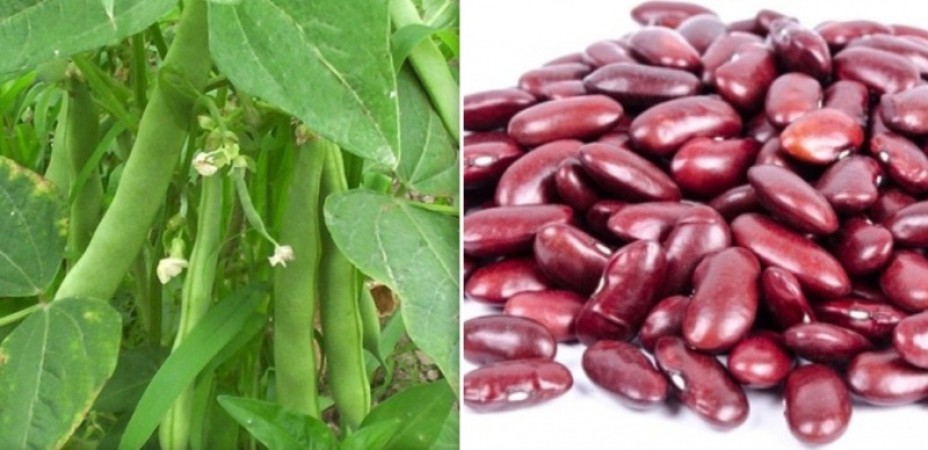
Rajma, or kidney beans, isn't just a staple in delicious curries; it's also a golden opportunity for farmers. Wondering how cultivating these red beans can fatten your wallet? Let's dive into the fascinating world of rajma farming and uncover the secrets to turning your fields into cash crops.
Rajma is beloved in cuisines worldwide, particularly in Indian households. This constant demand ensures a steady market and good prices. Plus, with the rise of vegetarian and vegan diets, rajma's popularity is only increasing.
Rajma is packed with protein, fiber, and essential nutrients, making it a health-conscious choice. Its nutritional benefits boost its market appeal, ensuring you're tapping into a profitable crop.
Not all rajma beans are created equal. Some popular varieties include:
Each type has specific growing requirements and market values, so choose wisely based on your region and resources.
Rajma thrives in well-drained loamy soil with a pH level between 6.0 and 7.5. It prefers a moderate climate with temperatures ranging from 15°C to 25°C. Ensure your farm location meets these criteria for optimal yield.
Proper land preparation is crucial for a successful rajma crop. Start by plowing the field thoroughly to remove weeds and enhance soil aeration. Adding organic matter or compost can further enrich the soil, providing a nutrient-rich bed for your beans.
Choose high-quality, disease-free seeds for the best results. Treat seeds with a fungicide to protect them from soil-borne diseases. This small step can significantly improve your crop's health and yield.
Sow seeds directly into the field at a depth of 3-5 cm, spacing them 20-30 cm apart. Ensure rows are about 45 cm apart to allow adequate growth space. Using a seed drill can help achieve uniform sowing, crucial for even crop development.
Rajma requires moderate watering. Overwatering can lead to root rot, while under-watering can stunt growth. Implement a drip irrigation system to provide consistent moisture without waterlogging the soil.
Feed your rajma plants with a balanced fertilizer rich in nitrogen, phosphorus, and potassium. Organic options like compost or manure can also be beneficial. Regular soil testing can help tailor fertilization to your crop's specific needs.
Weeds compete with your rajma plants for nutrients and water. Regular weeding, either manually or using herbicides, is essential. Watch out for pests like aphids and bean beetles. Organic insecticides or integrated pest management techniques can keep these threats at bay.
Rajma beans are ready for harvest when the pods turn brown and the beans inside are firm. Typically, this is about 90-120 days after sowing. Harvest promptly to avoid over-drying or potential pest infestations.
After harvesting, dry the beans thoroughly to reduce moisture content. Store them in airtight containers in a cool, dry place to prevent mold and extend shelf life. Proper storage is key to maintaining quality and market value.
Explore local markets, food processing companies, and export opportunities. Creating partnerships with local retailers or wholesalers can ensure a steady demand for your crop. Utilize online marketplaces to reach a broader audience.
Consider processing your rajma into ready-to-cook or pre-cooked products. This can significantly increase your profit margins. Packaging beans attractively and branding them as organic or locally grown can also enhance market appeal.
While rajma is profitable, diversifying your crops can further enhance your income. Rotate rajma with other legumes or cereals to maintain soil fertility and reduce pest cycles.
Many governments offer subsidies and schemes to support legume farmers. Research and take advantage of these opportunities to reduce costs and increase profitability.
Adopting sustainable farming practices not only helps the environment but can also improve your crop's marketability. Organic farming, crop rotation, and integrated pest management can make your farming more eco-friendly and appealing to conscious consumers.
Embrace modern agricultural technologies like precision farming, GPS mapping, and automated irrigation. These can enhance efficiency, reduce labor costs, and boost yields.
Stay updated with the latest research in legume farming. New seed varieties, pest control methods, and farming techniques are continually being developed. Keeping abreast of these advancements can keep you ahead of the competition.
Being part of farmer associations or cooperatives can provide valuable support, resources, and networking opportunities. Sharing knowledge and experiences with fellow farmers can be immensely beneficial.
Leverage online platforms to connect with other rajma farmers. Social media groups and agricultural forums can offer tips, answer questions, and provide a sense of community.
Agricultural markets can be volatile. Diversify your buyer base and explore contract farming to stabilize income. Being flexible and responsive to market trends can help mitigate risks.
Climate change poses a significant challenge to farming. Implementing resilient farming practices, such as drought-resistant varieties and efficient water management, can help protect your crops.
Effective financial management is crucial. Keep detailed records of expenses and earnings, and consider hiring a financial advisor if needed. Proper budgeting and investment in quality inputs can maximize your profits. Rajma farming is not just a traditional agricultural practice; it's a lucrative venture waiting to be explored. With the right knowledge, preparation, and dedication, you can turn your rajma fields into a rich source of income. Embrace sustainable practices, stay informed about market trends, and continuously seek ways to improve your farming techniques. Rajma farming can indeed make you rich – it’s time to plant the seeds of your success.
This powerful car entered the market with black styling pack, what is the price of this new edition?
Know how Tata Motors' new Sanand plant is, it was acquired from Ford last year